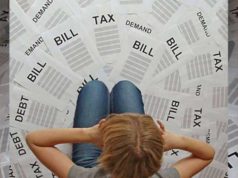
As opposed to other subsets of the law, such as the juvenile justice system which sees sizable variations from jurisdiction to jurisdiction based on the fact juvenile detention works as locally as the county level; the United States Government must have a stronger hand in regulating other matters like bankruptcy. This is especially so given that the subject is so closely tied to people's financial situations. As such, bankruptcy court is wholly a byproduct of the Federal judiciary.
This does not imply that each state does not have its own representative court, however. Throughout America's Federal districts extending even to its territories in the Atlantic and Pacific, the U.S. Bankruptcy Court system permits debtors and creditors to have their day in court, literally and figuratively. Contact bankruptcy lawyers for legal advice and assistance.
Background
The importance of bankruptcy courts in America is hard to deny considering over a million petitions are received by the United States Court system as a whole each year. In terms of its origin, the provision giving the Federal Government power to make nationwide laws on the subject has been around since our beginnings as an independent country.
Article I of the Constitution confers these abilities on Congress. However, in that given clause, it says nothing about the creation of a separate court to hear matters of insolvency. It would be the Bankruptcy Act of 1898, essentially the first major piece of legislation in American history, that would bring the Bankruptcy Courts into being.
The breadth of bankruptcy court in the United States is rather considerable. Geographically, each Federal District contains a bankruptcy court, including the District of Columbia, the Virgin Islands, the Northern Mariana Islands, Guam, and Puerto Rico. The Federal courts have exclusive domain over the filing and processing of bankruptcy cases in America, thereby expressly ruling out the states from deciding the financial fates of their constituents.
There is no one "supreme" bankruptcy court, as each District is designed so that it will have a certain degree of autonomy to manage affairs within its own boundaries. All the same, there is still a hierarchy when it comes to these "Federal courts."
Although, as noted, the bankruptcy courts are usually the ones given standing reference to rule on the circumstances of individual people, families and businesses, when it comes down to brass tax, as they say, the U.S. District Courts have ultimate oversight of the bankruptcy cases.
There are hierarchies and officers within bankruptcy courts themselves, too. As is the norm for court proceedings, bankruptcy court is subject to the findings of presiding judges. Working in concert with these heads of the court are, in most cases, trustees who essentially act as a liaison between debtors and creditors, and the clerks of court that help assign the case. Nonetheless, they too are bound by a specific code.
Through an appendix of Title 11 of the United States Code outlined and amended by the Supreme Court, the Federal Rules of Bankruptcy Procedure dictate how courts and those within should comport themselves, as well as Title 11 itself regarding variations based on the specific intent of the applying debtor.
Jurisdictions
Though bankruptcy filings do not come evenly to all parts of the country, there are still institutions in place that can hear petitions no matter where someone lives. Overseeing the 94 districts into which the United States is divided are 12 circuits that, for the most part, are organized with respect to closeness. As for overseas territories, which, as noted, are included for consideration by bankruptcy courts, Puerto Rico is a member of the First Circuit along with Maine, New Hampshire, Rhode Island, and Vermont.
The Virgin Islands are included with Delaware, New Jersey, and Pennsylvania in the Third Circuit. Guam and the Northern Mariana Islands are part of the Ninth Circuit along with a host of states. It should be noted that the District of Columbia receives its own bankruptcy court.
As the above breakdowns of individual circuits indicate, the sizes of these different circuits may vary greatly. They may be as small as the District of Columbia, or as large as the Ninth Circuit, which includes eleven subdivisions between states and territories. Certainly, though, this is explicable by virtue of differing population densities across the nation and disparities of land areas among different states.
The records of these courts are also subject to the officiating of these individuals and circuits. It is thus the task of entities like the Public Access to Court Electronics Records (PACER) system (affiliated with the Federal judiciary and funded by public use) and devices like West's Bankruptcy Reporter to compile this information.
Limited Formal Proceedings
While bankruptcy proceedings are not a laughing matter, it also may not always be subject to the same strictness that is inherent in criminal court. This may work to the advantage of both debtors and creditors depending on the circumstances.
Quite generally, courts may be more lenient with debtors depending on the judge's views of the case, although they (the debtors) should be expected to cooperate fully with trustees and creditors, when applicable. Then again, provisions like automatic stay – which may be granted without first notifying lenders – are quite substantial benefits to people who are unable to meet their financial obligations. As for the creditors, they may not even have to file their claims to monies owed to them by the books and may request for bankruptcy proceedings to begin for their own collection purposes.
Debtors and creditors may be able to avoid formal court proceedings altogether, which may be costly in their own right. Especially concerning corporate debtors with a number of interested lenders and shareholders, companies may enter into private agreements with these parties to release them of their monetary requirements.
Seeing as these affairs are not protected by the conventions of Federal court, they contain a certain element of risk, even though they may be more convenient and expedient than going through a series of hearings in bankruptcy court. Moreover, if something does go awry, the courts will have limited ability to remedy the situation.
Goal of Bankruptcy Laws
In theory, bankruptcy laws and bankruptcy courts are meant to benefit the parties that request their services without causing hardship for the other parties. The majority of petitions are submitted by the debtors themselves (and with some bankruptcy forms may, in fact, only be requested by the insolvent party), and thus, realistically the courts are very debtor-oriented.
Especially concerning liquidation proceedings that will result in a net loss of assets, perhaps even one's home, the workings of bankruptcy law will be a means of starting over, even if that is not wholly desired by the individual debtor, and despite the mark that will be left on one's credit.
Again, both the designs of other parties directly involved in the case and those who are more ancillary to the proceedings but still possess a stake in the outcome are to be considered.
In all cases, creditors are to be represented in terms of their legitimate claims for monies owed to them based on a previous contract with their debtors. Businesses may also petition for bankruptcy relief, both domestically (i.e. Chapter 7 and Chapter 11) and across international lines (i.e. Chapter 15).
Adversary Proceedings
When differences between debtors and creditors cannot be resolved by the normal proceedings of bankruptcy court, or one party does not act fairly according to State and Federal statutes on bankruptcy, adversary proceedings are a natural result. Solicited by one proverbial side of the equation through the means of a formal complaint, an adversary proceeding is similar to most civil court operations, with a plaintiff, defendant, judge, and, on request, a trial by jury.
Oftentimes, these proceedings will manifest as a result of the appearance of fraud or abuse. Either the accused will have obscured the true nature of their assets (i.e. what they are, who owns them) or will have falsified court documentation to deliberately deceive creditors and bankruptcy court officials.
Through adversary proceedings, almost all stages of the bankruptcy relief process may be contested. For one, the debt repayment plan, the big symbol of one's attempt to get out of debt, is subject to review upon allegations of fraudulent activity. So too can discharge of debts be objected to for similar reasons, or simply with the idea that the debtor may wish to have some debts discharged that are legally incapable of inclusion in this category.
Debtors and creditors may even seek judgments to see where they stand on the issue beforehand and after. In short, there are a lot of potential uses for adversary proceedings for debtors and creditors alike.
Meeting of the Creditors
Commensurate with the idea creditors must stay informed at all points in bankruptcy court proceedings, they must be served notice in the event of formation of a bankruptcy plan that would have them as claimants.
In a meeting of the creditors, the namesake party, the representative of the trustee and the debtor all convene in a suitable forum for hearing questions on the workings of the bankruptcy plan if it were to be implemented. Both the appointed trustee and the creditors will have their opportunity to ask questions, but with the latter party, it is decidedly more likely that they will raise them in somewhat of a contrary manner.
Automatic Stay
In a perfect world, no one would have to declare bankruptcy. In the real world, however, millions of people file for bankruptcy each year in the United States alone. To be sure, there are compelling reasons for and against this course of action, but as the facts of the case allow, one of the greatest incentives for submitting an application is to put a stop, albeit temporarily, to creditors' demands.
This is made possible by the doctrine of automatic stay, which does not even require a court hearing to take effect. Though short in duration, this near-complete order might be just the ticket for the debtor who is not looking to sell his or her possessions.
An automatic stay is not without its limitations, though. As noted, automatic stay does not afford the debtor freedom from creditors throughout the rest of his or her life and does not apply to exceptions to the rule specified in the Bankruptcy Code. Nonetheless, an automatic stay has some other functions. It allows individuals and corporations a period to try to reform and become better debt managers. Moreover, especially for corporations, they may use this time to try institute a more competitive business rate than their competition.
Role of Bankruptcy Judges
Bankruptcy court judges, appointed to 14-year terms in Federal bankruptcy courts by the U.S. Court of Appeals system, do more than serve as a figurehead nominally holding their posts in these affairs. On the contrary, bankruptcy judges, like bankruptcy attorneys, must possess an intimate knowledge of bankruptcy law.
The decisions of the bankruptcy judge will be of utmost important to a debtor's case for relief, especially if those decisions involve a refusal to hear the case itself or its dismissal. These determinations are not simply arbitrary, but are based on the Federal Rules of Bankruptcy Procedure and the individual procedural rules set by that court.
Working hand in hand with a representative of the U.S. Trustee, a bankruptcy court judge will also be involved significantly with discussion and confirmation of a plan. At the very least, a reorganization or liquidation plan must serve the initial stated purpose of the debtor in applying for bankruptcy and must be fair to all creditors and interested parties and clear their objections, or else risk dismissal by the judge.
Then again, a bankruptcy judge does not work only to serve the creditor and restrict the debtor. As much as the veracity of a voluntary petition must be proved, bankruptcy judges must also respond to the viability of lenders' claims and any motions filed by attorneys during proceedings.
Role of Trustees
Not to discount the role of bankruptcy court judges, but these professionals in themselves cannot handle/oversee the totality of bankruptcy litigation proceedings. A necessary officer in the administration of a bankruptcy case is that of the assigned trustee in bankruptcy.
District bankruptcy trustees represent 21 organized geographic regions in the United States and are appointed specifically by the U.S. Attorney General. Sometimes trustees are a non-factor in bankruptcy proceedings, as in Alabama and North Carolina which are under the domain of "bankruptcy administrators" or as in Chapter 11.
Among these specific tasks of trustees and bankruptcy administrators are holding creditors' meetings and asking pointed questions therein alongside concerned creditors regarding a repayment plan, distributing agreed-upon monies subsequent to confirmation of said plan, and probing charges that a bankruptcy appeal was made in bad faith and/or that creditors and court officials were illegally misinformed.
It should be acknowledged at this juncture that the executive officer of the U.S. Trustee for a given region will not hear every case himself or herself; the demand is simply too high. That said, regional trustees working for the government may yet appoint private trustees in bankruptcy to administer cases of personal and corporate bankruptcy in Chapter 7, 11, 12 and 13 bankruptcy cases.
Bankruptcy Appellate Panel
Following a ruling in bankruptcy court contested by the debtor, in some Federal districts, the next immediate step is to file a motion for appeal to a bankruptcy appellate panel (BAP). Bankruptcy appellate panels have been on the books ever since the Bankruptcy Reform Act of 1978.
Bankruptcy appellate panels are headed by a trio of bankruptcy judges who serve their circuits as a whole with their opinions. The panels and the officials that oversee appeals from the bankruptcy court are also influenced by the rulings of a higher court.
As part of the Supreme Court's Federal Rules series, the Federal Rules of Bankruptcy Procedure and Federal Rules of Appellate Procedure are both applicable to reach this branch of the Court of Appeals. This assumes that a BAP is even requested to weigh in on these affairs. The general district court may be asked to render a verdict and/or refer the case to the head Court of Appeals for the entire circuit.
Federal Rules of Bankruptcy Procedure
In an effort to ensure uniformity from court to court with regard to bankruptcy proceedings in the United States, the Federal Rules of Bankruptcy Procedure are authorized and modified now and again by the Supreme Court, which first gained this privilege as a result of the language of Congress's Rules Enabling Act. In Section 2075, the Supreme Court is extended the right to create a set of guidelines for bankruptcy procedure alongside Title 11 of the United States Code, the Bankruptcy Code.
Today, there are nine sections within the Federal Rules of Bankruptcy Procedure (FRBP). Among the particular elements spelled out by the FRBP include the roles of all parties directly involved in court meetings/hearings, how proceedings may begin, how creditors' claims must be regarded by debtors and the court alike, how estates may be sold and reorganized, appeals to higher courts, and how criminal proceedings may come to be.




















